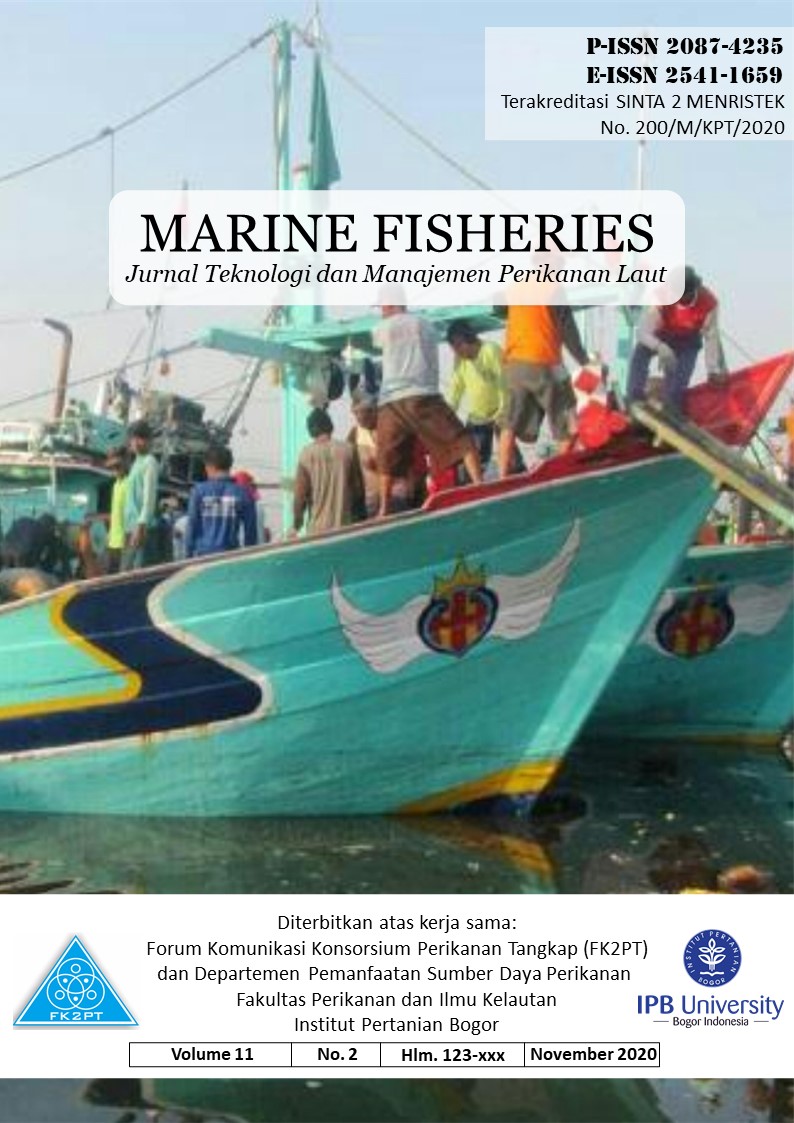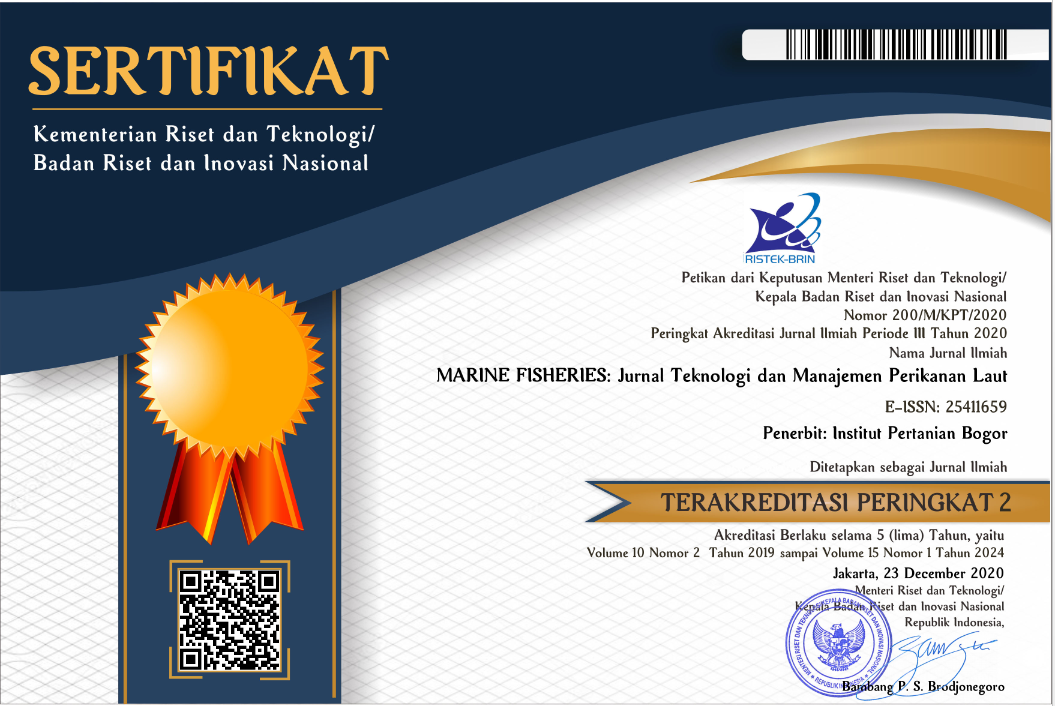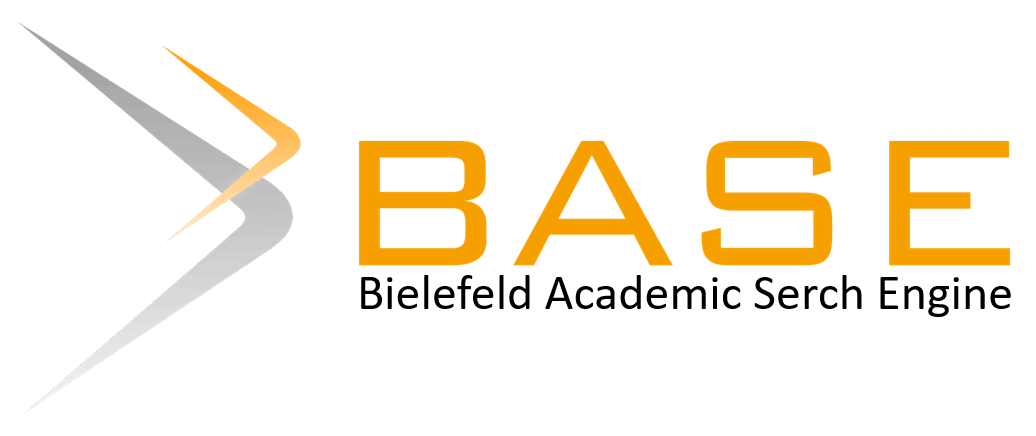DISTRIBUSI SPASIAL DAN TEMPORAL IKAN TUNA (Thunnus sp) DI PERAIRAN BARAT SUMATERA BERBASIS SISTEM INFORMASI GEOGRAFIS
Abstract
One tool that can be used to visualize and connect various types of spatial and temporal distribution is Geographic Information System. The purpose of this study is to analyze the pressure of longline fisheries, tuna catches and fishing effort and can model the spatial distribution and temporal (of tuna, during longline fishery activities in 2013. Experimental methods are used in determining the size pixels and kernel shape. The form of the kernel that displays the best results is quartic. The optimal radius produced from the equation 0.68n-0.2 is 0.25 degrees (27.78 km). The CPUE uses raster data on catch density (tail field) and fishing line density (field number of hooks). The calculation is done by multiplying the density of the raster catch (tail) by 1,000 then divided by the density of the raster fishing hooks. The results show that the range of CPUE values ranged from 0.833 - 416. The total area of the total fishing effort was 161,520 km2 with an ffort of catching of 57,502.017 per 1,000 hooks. The total number of CPUE top heatmap is 38,948.29 per 1,000 hooks in 38,080 km2, most are in the Mentawai Strait, other parts are also found in the south of Siberut Island, west of Enggano Island to the Indian Ocean. Seasonal patterns show that the East season is the season with the highest catching effort in the Mentawai Strait, the Siberut Strait to the southern part of Siberut Island and the Transition I season is the lowest catching effort.
Keywords: Spatial and temporal distribution, tuna density, CPUE, heatmap, Indian Ocean
Downloads
Author(s) who published in this journal agree to following terms:
- Author(s) must understand and agree that the copyright script in published owned by the Marine Fisheries Journal. The copyright includes reproducing and selling the manuscript to all parties.
- Everyone can cite every manuscript published in Marine Fisheries for educational purposes, with the author's name and the Marine Fisheries Journal on reference.










